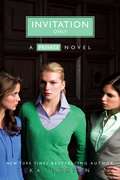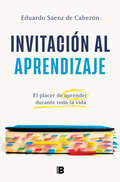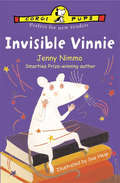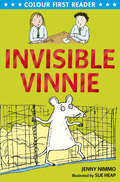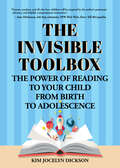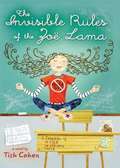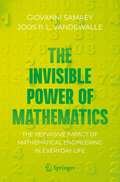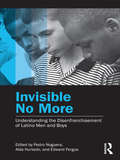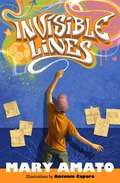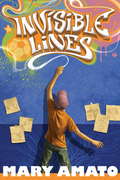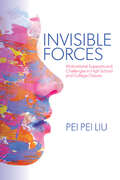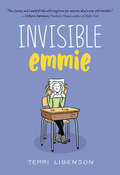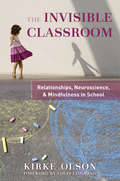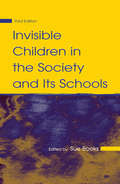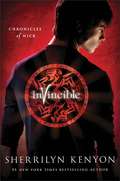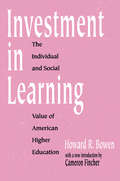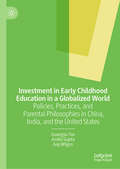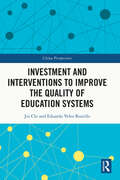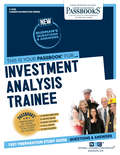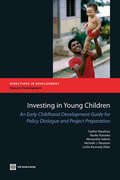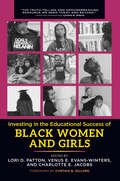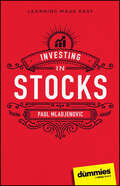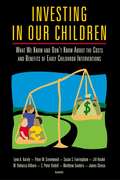- Table View
- List View
Invitation Only: A Private Novel
by Julian Peploe Kate BrianReed Brennan's future is looking as bright as the two-karat diamonds in her new housemates' ears. Being accepted to the most prestigious private boarding school in the country wasn't enough for Reed. She had to break every rule to do it, but she has accomplished the impossible: Reed is a Billings Girl now. And with her new status come respect, envy, and, most important, opportunity. Not to mention the parties. Unfortunately, at the next illicit party in the Easton campus woods, her roommate snaps some pictures of Reed in more than one compromising position. She uses the photos to blackmail Reed: Dig up dirt on the most powerful and popular Billings Girls or she will have Reed expelled. And speaking of parties, the Legacy is coming up. It's the invitation-only Halloween party in NYC and it's rumored that Thomas -- Reed's MIA boyfriend -- will be making an appearance there. Too bad Reed isn't even close to invited. Life as a Billings Girl is every bit as glamorous as Reed imagined. What she didn't bargain for is the tangled web of private lies these girls weave.
Invitación al aprendizaje: El placer de aprender durante toda la vida
by Eduardo Sáenz de CabezónCÓMO DISFRUTAR DE UNA VIDA PLENA GRACIAS A LA CURIOSIDAD Y EL APRENDIZAJE. ¿Se puede aprender durante toda la vida? ¿Soy capaz de aprender algo nuevo? ¿Cuáles son los mejores métodos para aprender? ¿Es verdad que la buena salud se relaciona con el aprendizaje? ¿Y qué tiene que ver el aprendizaje con la felicidad? El aprendizaje es la capacidad más extraordinaria de nuestro cerebro, lo que equivale a decir que es la capacidad más extraordinaria del ser humano. Que nuestro propio cerebro se modifique, físicamente, para ser capaz de leer, de tocar la guitarra, de realizar complejos cálculos matemáticos..., es una maravilla que no tiene igual en el resto de la naturaleza. Además, esta habilidad la podemos cultivar y alimentar para tener una experiencia del mundo más rica, o bien podemos descuidarla y perder la oportunidad que cada día tenemos al alcance de nuestros sentidos. A través de estudios científicos de psicología cognitiva y neurociencia, y a partir de su propia experiencia como aprendiz y enseñante, Eduardo Sáenz de Cabezón -matemático, profesor y divulgador- nos invita a un viaje fascinante por los misterios del aprendizaje y, de una manera práctica, nos invita a aprender a aprender, a disfrutar de la curiosidad y así a gozar de una vida mucho más plena. ¿ESTÁS LISTO PARA APRENDER A APRENDER? «Mantener una curiosidad activa es uno de los ingredientes principales de una vida plena. Por eso es tan importante que sepamos disfrutar del aprendizaje, que sepamos cómo aprender mejor, y así gozar de una vida de aprendizajes enriquecedores».
Invisible Vinnie
by Jenny Millward'Zack's not scared of anything. But everyone's scared of him.'Rose wishes Zack wasn't such a big bully. He's always teasing her at school. Luckily for Rose, her Uncle Vinnie has a wizard trick or two up his sleeve - maybe he can conjure up a magic solution to her problem?Soon, with a little help from Uncle Vinnie and the classroom pet rat, Rose is ready to teach Zack a lesson he'll never forget . . . A comical and thought-provoking story by an award-winning author.Illustrated by Sue Heap, winner of the Smarties Prize Gold Award.
Invisible Vinnie
by Jenny Millward'Zack's not scared of anything. But everyone's scared of him.'Rose wishes Zack wasn't such a big bully. He's always teasing her at school. Luckily for Rose, her Uncle Vinnie has a wizard trick or two up his sleeve - maybe he can conjure up a magic solution to her problem?Soon, with a little help from Uncle Vinnie and the classroom pet rat, Rose is ready to teach Zack a lesson he'll never forget . . . A comical and thought-provoking story by an award-winning author.Illustrated by Sue Heap, winner of the Smarties Prize Gold Award.
The Invisible Toolbox: The Power of Reading to Your Child from Birth to Adolescence
by Kim Jocelyn DicksonAn Essential Tool for Preparing Your Child for Kindergarten and BeyondReading aloud to your children is essential. Longtime elementary school teacher Kim Jocelyn Dickson believes every child begins kindergarten with a lunchbox in one hand and an “invisible toolbox” in the other. In The Invisible Toolbox, Kim shares with parents the single most important thing they can do to foster their child’s future learning potential and nurture the parent-child bond that is the foundation for a child’s motivation to learn. She is convinced that the simple act of reading aloud has a far-reaching impact that few of us fully understand and that our recent, nearly universal saturation in technology has further clouded its importance.In The Invisible Toolbox, parents, educators, and early literacy advocates will discover:Ten priceless tools that will fill their child’s toolbox when they read aloud to their childTools parents can give themselves to foster these gifts in their childrenPractical tips for how and what to read aloud to children through their developmental stagesDos and don’ts and recommended resources that round out all the practical tools a parent will need to prepare their child for kindergarten and beyondEssential book for parents. In The Invisible Toolbox, Kim weaves her practical anecdotal experience as an educator and parent into the hard research of recent findings in neuroscience. She reminds us that the first years of life are critical in the formation and receptivity of the primary predictor of success in school—language skills—and that infants begin learning immediately at birth. She also teaches and inspires us to build our own toolboxes so that we can help our children build theirs.If you enjoyed books like Honey for a Child's Heart, The Read-Aloud Handbook, Screenwise, or The Enchanted Hour; you will love The Invisible Toolbox—from a 21st century Charlotte Mason.
The Invisible Rules of the Zoë Lama
by Tish CohenTwelve-year-old Zoë, famous for advising other people using her unwritten rules, has her hands full with chairing a school dance committee, training a new student to fit in, keeping her grandmother out of a nursing home, and trying to find a husband for her mother.
The Invisible Power of Mathematics: The Pervasive Impact of Mathematical Engineering in Everyday Life (Copernicus Books)
by Giovanni Samaey Joos P. VandewalleHow does homebanking work? How are board games developed? How reliable can wind energy get? How do we discover forged paintings? Do smart girls stay single? How dangerous can a bioterrorist get? In all these questions (and many others), mathematics plays a crucial role in the search for an answer.This book tells the story behind twenty of these questions. This is explicitly not a mathematics book, but a book about the crucial role that mathematics plays in devising the creative solutions the world needs. The questions are divided into three categories: home, garden and kitchen mathematics; mathematics for the workplace; and mathematics for tomorrow's society. The themes illustrate not only the incredibly broad applicability of mathematics in the world around us, but also the great diversity of useful mathematical techniques.
Invisible No More: Understanding the Disenfranchisement of Latino Men and Boys (Invisible No More Ser. #Vol. 2)
by Pedro Noguera Aída Hurtado Edward FergusLatino men and boys in the United States are confronted with a wide variety of hardships that are not easily explained or understood. They are populating prisons, dropping out of high school, and are becoming overrepresented in the service industry at alarming degrees. Young Latino men, especially, have among the lowest wages earned in the country, a rapidly growing rate of HIV/AIDS, and one of the highest mortality rates due to homicide. Although there has been growing interest in the status of men in American society, there is a glaring lack of research and scholarly work available on Latino men and boys. This groundbreaking interdisciplinary volume, edited by renowned scholars Pedro Noguera, Aída Hurtado and Edward Fergus addresses the dearth of scholarship and information about Latino men and boys to further our understanding of the unique challenges and obstacles that they confront during this historical moment. The contributors represent a cross section of disciplines from health, criminal justice, education, literature, psychology, economics, labor, sociology and more. By drawing attention to the sweeping issues facing this segment of the population, this volume offers research and policy a set of principles and overarching guidelines for decreasing the invisibility and thus the disenfranchisement of Latino men and boys.
Invisible Me (Sweet Valley Junior High #23)
by Francine Pascal Jamie SuzanneBrian thinks Kristin, the class president, is pretty. Her friends think she's perfect. Her teachers think she's smart. And she always believed them. Until now. She questions herself when the class council likes Bethel's idea better than her own.
Invisible Lines
by Mary AmatoComing from a poor, single-parent family, seventh-grader Trevor must rely on his intelligence, artistic ability, quick wit, and soccer prowess to win friends at his new Washington, D.C. school, but popular and rich Xander seems determined to cause him trouble.
Invisible Lines
by Antonio Caparo Mary AmatoIf there's one thing I'm good at it's making people laugh because when I'm standing up I'm what you call a stand-up comedian, and when I'm sitting down, I'm just plain funny. Trevor is just plain funny, and he's lucky he is. Because this year he needs a sense of humor. Moving to a new home is hard enough--the sign reads hedley gardens, but everyone calls these projects deadly gardens. And the move to a fancy new school is even harder--all the kids from Deadly Gardens seem to be in the same classes and keep to themselves, but somehow Trevor's ended up in an advanced science class with kids who seem to have everything, and know everything, including how to please their strange new teacher.Someone else might just give up, but Trevor has plans. This is going to be his year. And he is going to use whatever he has, do whatever it takes, to make it at this new school. He may not have what these other kids have, but Trevor knows he's got some stuff to show. No one is better at juggling in soccer, and he knows he can draw--he calls himself the Graffiti Guy. But Xander, a star in the classroom and on the soccer field, has other plans for Trevor. He doesn't like anyone trespassing on his turf and begins to sabotage Trevor at every opportunity. Who is going to believe Trevor over the school star? Is there any way that Trevor can achieve his goals against a guy who is as good at bullying as he is at everything else he does?
Invisible In The Third Grade
by Margery CuylerAlex has chewed gum before, but nothing like ZXO's Double Trouble Bubble Gum. Not only does it taste great, it makes him invisible! And being invisible can lead to some fun trouble on Halloween night.
Invisible Forces: Motivational Supports and Challenges in High School and College Classes
by Pei Pei LiuEducators consistently identify student motivation as a top concern, particularly during the transition to college, but often feel helpless to influence it. Some assume that students are simply motivated or not. Others are daunted by trying to shape an unobservable psychological phenomenon. Invisible Forces provides a framework for thinking of student motivation as a set of internal "mindsets" that are promoted or thwarted through a complex ecology of personal, classroom, institutional, and systemic factors. Using the method of portraiture, Pei Pei Liu brings this ecology to life. The book presents a series of four rich case studies of educators' efforts to support student motivation and the challenges they encounter in secondary and postsecondary writing classrooms. Attuned to the unique status of writing-based courses as a near universal academic experience throughout the transition from high school to college, these portraits shed light on different strategies, make a case for institutional support of instructors, and pave the way for greater alignment between secondary and postsecondary settings.
Invisible Emmie (Emmie & Friends)
by Terri LibensonPerfect for fans of Raina Telgemeier and Jennifer L. Holm, Invisible Emmie is a humorous and surprising debut graphic novel by Terri Libenson, creator of the internationally syndicated, Reuben Award-winning comic strip The Pajama Diaries. This is the story of two totally different girls—quiet, shy, artistic Emmiepopular, outgoing, athletic Katie—and how their lives unexpectedly intersect one day, when an embarrassing note falls into the wrong hands. . . .All the crushes, humiliations, boredom, and drama of middle school are compressed into one surprising day in this extraordinary novel.Plus don't miss Terri Libenson's Positively Izzy, Just Jaime, and Becoming Brianna!
The Invisible Classroom: Relationships, Neuroscience & Mindfulness in School (The Norton Series on the Social Neuroscience of Education)
by Kirke Olson Louis CozolinoImproving student learning with the tools of neuroscience and mindfulness. How is expanding students' strengths more effective than improving their weaknesses? Why is creating a school where staff and students feel safe necessary for learning? How can anchoring with simple mindfulness practices prevent classroom behavioral problems? There is more to a classroom than just a teacher and a group of students. All classroom interactions have "invisible" neurobiological, emotional, and social aspects--the emotional histories of students, the teacher's own background and biography. In this book, Kirke Olson takes lessons from brain science, mindfulness, and positive psychology to help teachers understand the full range of their students' school experiences. Using its classroom-ready resources, teachers, administrators, parents, and policy makers can make the invisible visible, turning human investment in their students into the best possible learning outcomes.
Invisible Children in the Society and Its Schools (Sociocultural, Political, and Historical Studies in Education)
by Sue BooksThe authors in this book use the metaphors of invisibility and visibility to explore the social and school lives of many children and young people in North America whose complexity, strengths, and vulnerabilities are largely unseen in the society and its schools. These “invisible children” are socially devalued in the sense that alleviating the difficult conditions of their lives is not a priority—children who are subjected to derogatory stereotypes, who are educationally neglected in schools that respond inadequately if at all to their needs, and who receive relatively little attention from scholars in the field of education or writers in the popular press. The chapter authors, some of the most passionate and insightful scholars in the field of education today, detail oversights and assaults, visible and invisible, but also affirm the capacity of many of these young people to survive, flourish, and often educate others, despite the painful and even desperate circumstances of their lives. By sharing their voices, providing basic information about them, and offering thoughtful analysis of their social situation, this volume combines education and advocacy in an accessible volume responsive to some of the most pressing issues of our time. Although their research methodologies differ, all of the contributors aim to get the facts straight and to set them in a meaningful context. New in the Third Edition: Chapters retained from the previous edition have been thoroughly revised and updated, and five totally new chapters have been added on the topics of:*young people pushed into the “school-to-prison” pipeline; *the “environmental landscape” of two out-of-school Mexican migrant teens in the rural Midwest;*the perceptions and practices, in and outside schools, that construct African American boys as school failures;*negative portrayals of blackness in the context of understanding the “collateral damage of continued white privilege”; and *working-class pregnant and parenting teens’ efforts to create positive identities for themselves. Of interest to a broad range of researchers, students, and practitioners across the field of education, this compelling book is accessible to all readers. It is particularly appropriate as a text for courses that address the social context of education, cultural and political change, and public policy, including social foundations of education, sociology of education, multicultural education, curriculum studies, and educational policy.
Invincible (Chronicles of Nick #2)
by Sherrilyn Kenyon<P>Nick Gautier's day just keeps getting better and better. Yeah, he survived the zombie attacks, only to wake up and find himself enslaved to a world of shapeshifters and demons out to claim his soul. <P> His new principal thinks he's even more of a hoodlum than the last one, his coach is trying to recruit him to things he can't even mention and the girl he's not seeing, but is, has secrets that terrify him. <P>But more than that, he's being groomed by the darkest of powers and if he doesn't learn how to raise the dead by the end of the week, he will become one of them. . .
Investment in Learning: The Individual and Social Value of American Higher Education
by Howard R. Bowen Cameron FincherThe value of higher education has been under attack as seldom before in American history. We are told of the overeducated American, of the case against college, and of the failure of education to contribute significantly to the reduction of inequality. In this environment, republication of an exceptionally comprehensive and judicious analysis of all that has been learned and not learned about the consequences of American higher education comes at a most appropriate time. Investment in Learning more fully covers the various aspects of this subject than any yet to appear. Howard Bowen is optimistic about higher education, but his viewpoint is based on profound knowledge of both the economic and social aspects of education. Unlike some economists who insist on a strict cost-benefit analysis of expenditures on higher education in relation to outcomes, Bowen argues that the non-monetary benefits are far greater, to the point that individual and social decisions should be made primarily on those broader indicators.Cameron Fincher, in his new opening for the book, notes that "Publication of Howard Bowen's Investment in Learning was like a break in a long summer drought. . . . It was a comprehensive rebuttal to return-on-investment studies with negativistic findings." And in the foreword to the book, Clark Kerr simply says, "Howard Bowen is better prepared to survey the overall consequences of higher education in the United States than anyone else."
Investment in Early Childhood Education in a Globalized World: Policies, Practices, and Parental Philosophies in China, India, and the United States
by Gay Wilgus Amita Gupta Guangyu TanThis book is a comparative study of how early childhood educational policies and initiatives in three countries—China, India, and the United States—have been utilized as both direct and indirect strategies for responding to fierce global economic competition. Human capital theory and cultural ecology theory serve as the conceptual framework for discussing how this has played out in each of the three countries. In addition, this book presents a discussion and analysis of how the beliefs, parents’ perspectives, and practices with regard to child-rearing and the education of young children have both changed and remained the same in response to forces of globalization.
Investment and Interventions to Improve the Quality of Education Systems (China Perspectives)
by Jin Chi Eduardo Velez BustilloQuality improvement is a major current goal of Education in China and this will be achieved through overall quality improvement of the education system as a whole, a situation that is also the case across the world. Deploying a cost-benefit analysis and multidisciplinary perspectives from education, economics, neurocognition, gender studies, child development, and international development, this book presents a range of critical interventions in education development and investment that have proven to be effective in many countries around the world. The book draws on theoretical and practical experience in the field of education investment and analyses key issues in China's early childhood education, early reading, girls' education, brain science application in international education, small-scale schools in low income areas and teacher education. Students and scholars of education and development and Chinese education will benefit from this title.
Investment Analysis Trainee: Passbooks Study Guide (Career Examination Series)
by National Learning CorporationThe Investment Analysis Trainee Passbook® prepares you for your test by allowing you to take practice exams in the subjects you need to study. It provides hundreds of questions and answers in the areas that will likely be covered on your upcoming exam.
Investing in Young Children: An Early Childhood Development Guide for Policy Dialogue and Project Preparation
by Naoko Kataoka Sophie Naudeau Michelle J. Neuman Alexandria Valerio Leslie Kennedy ElderThe World Bank created this Early Child Development (ECD) Guide in response to a growing demand from Task Team Leaders (TTLs) for advice and support to facilitate the policy dialogue on the topic of ECD and to help policy makers make and implement relevant choices on how to best invest in ECD in the context of their country's economy and national priorities. This Guide fills a gap in the literature by (i) distilling existing information in a user-friendly format, (ii) providing practical information on topics that have recently become particularly relevant in ECD (e.g., measuring child development outcomes through the identification and adaptation of relevant instruments, conditional cash transfers for families with young children, etc.), and (iii) assessing the quality of the latest evidence on each topic and identifying the knowledge gaps/remaining questions for which additional experimentation and evaluation are required. This Guide is designed as a series of short notes (approximately 6-8 pages each), clustered into thematic sections: (i) Initiating the policy dialogue: Why invest in ECD? (3 notes); (ii) Assessing needs, measuring outcomes, and establishing policy frameworks (2 notes); (iii) "Strategic entry points" for ECD investments (4 notes); and (iv) Costing and financing (2 notes). The notes are summarize the main debates in the field. Each note is designed to be read independently, so information is sometimes repeated or cross-referenced across notes.
Investing in the Educational Success of Black Women and Girls
by Lori D. Patton Venus E. Evans-Winters Charlotte E. Jacobs“In the powerful essays that make up Investing in the Educational Success of Black Women and Girls, Black women and girls are listened to, appreciated and valued in recognition of the unrelenting challenges to our existence in a world that continues to be committed to stifling our voices. What these authors know intimately is that such stifling is not because what Black women and girls are saying isn’t important: It is precisely because it is. This book names the challenges Black women and girls continue to experience as we pursue our education and offers implications and recommendations for practitioners, teachers, administrators, and policymakers. [It] needs to be read widely and deeply studied as much for its formations and beautiful representations of Black women and girls as its recommendations. It is the truth-telling we need today and a groundbreaking resource we need today and beyond.”—Cynthia B. Dillard (Nana Mansa II of Mpeasem, Ghana), Athens, Georgia; and Cape Coast, Central Region, GhanaWhile figures on Black women and girls’ degree attainment suggest that as a group they are achieving in society, the reality is that their experiences are far from monolithic, that the educational system from early on and through college imposes barriers and inequities, pushing many out of school, criminalizing their behavior, and leading to a high rate of incarceration.The purpose of this book is to illuminate scholarship on Black women and girls throughout the educational pipeline. The contributors--all Black women educators, scholars, and advocates--name the challenges Black women and girls face while pursuing their education as well as offer implications and recommendations for practitioners, policymakers, teachers, and administrators to consider in ensuring the success of Black women and girls.This book is divided into four sections, each identifying the barriers Black girls and women encounter at the stages of their education and offering strategies to promote their success and agency within and beyond educational contexts.In Part One, the contributors explore the importance of mattering for Black girls in terms of redefining success and joy; centering Black girl literacy pedagogies that encourage them to thrive; examining how to make STEM more accessible to them; and recounting how Black girls’ emotions and emotional literacy can either disempower them or promote their sense of agency to navigate educational contexts.Part Two uncovers the violence directed toward and the criminalization of Black women and girls, and how they are situated in educational and justice systems that collude to fail them. The contributors address incarceration and the process of rehabilitation and reentry; the outcomes of disciplinary action in schools on women who pursue college; and describe how the erasure and disregard of Black women and girls leaves them absent from the educational policies that deeply affect their lives and wellbeing.Part Three focuses on how Black women are left to navigate without resources that could make their collegiate pathways smoother; covers how hair politics impact their acceptance in college leadership roles, particularly at HBCUs; illuminates the importance of social/emotional and mental health for Black undergraduate women and the lack of adequate resources; and explores how women with disabilities navigate higher education.The final part of this book describes transformative approaches to supporting the educational needs of Black women and girls, including the use of a politicized ethic of care, intergenerational love and dialogue, and constructing communities, including digital environments, to ensure they thrive through their education and beyond.
Investing in Stocks For Dummies
by Paul MladjenovicYes, you can make money in the stock market—this guide shows you how Investing in Stocks For Dummies gives you a straightforward introduction to stock investing. You’ll learn the basics of buying and selling stocks, including how to research stocks and the factors that influence their performance. Even in an uncertain and challenging marketplace, you can profit by making smart financial decisions and investing wisely. This book explains how to calculate net worth, deal with tax laws, and do all the things that will make you a successful investor. This Dummies guide is packed with clear instructions and solid advice so you can start investing with confidence. Learn how to choose the best stocks for your goals and create a diverse portfolio Understand the risks involved in stock investing and choose a strategy that works Navigate the market’s ups and downs with time-tested techniques Plan for your financial future and invest according to your timelineThe expert info in this book will start you off on the right foot as you begin your journey down Wall Street.
Investing in Our Children: What We Know and Don't Know About the Costs and Benefits of Early Childhood Interventions
by Jill Hoube Lynn A. Karoly Peter W. Greenwood M. Rebecca Kilburn Susan S. EveringhamThere is increasing evidence that the first few years after birth are particularly important in child development and present opportunities for enrichment but also vulnerabilities do to poverty and other social stressors. Elected officials have begun proposing potentially costly programs to intervene early in the lives of disadvantaged children. Have such interventions been demonstrated to yield substantial benefits? To what extent might they pay for themselves through lower welfare and criminal justice costs incurred by participating children as they grow into adults? This study synthesizes the results of a number of previous evaluations in an effort to answer those questions. Conclusions are that under carefully controlled conditions, early childhood interventions can yield substantial advantages to recipients in terms of emotional and cognitive development, education, economic well-being, and health. (The latter two benefits apply to the children's families as well.) If these interventions can be duplicated on a large scale, the costs of the programs could be exceeded by subsequent savings to the government. However, the more carefully the interventions are targeted to children most likely to benefit, the more likely it is that savings will exceed costs. Unfortunately, these conclusions rest on only a few methodologically sound studies. The authors argue for broader demonstrations accompanied by rigorous evaluations to resolve several important unknowns. These include the most efficient ways to design and target programs, the extent to which effectiveness is lost on scale-up, and the implications of welfare reform and other safety net changes.
